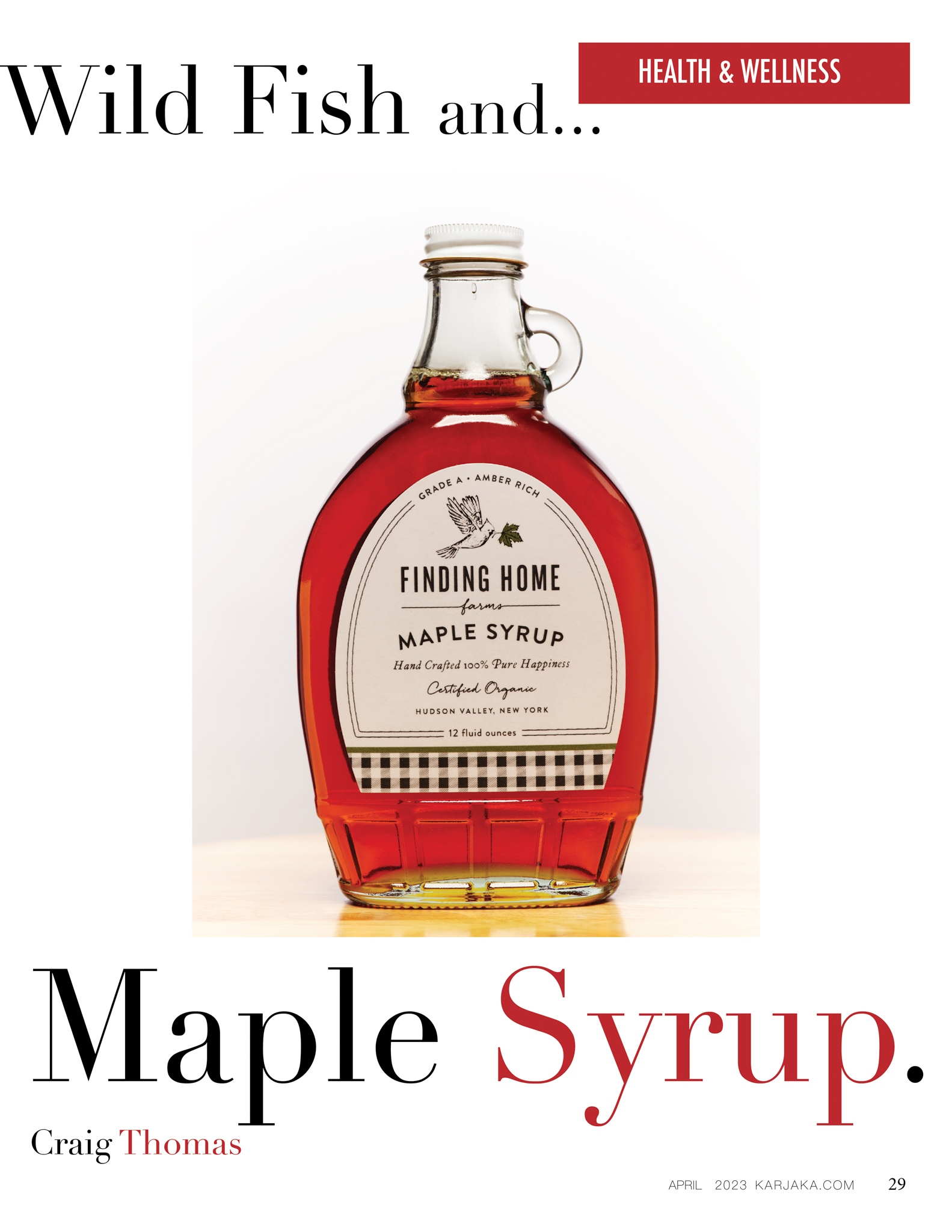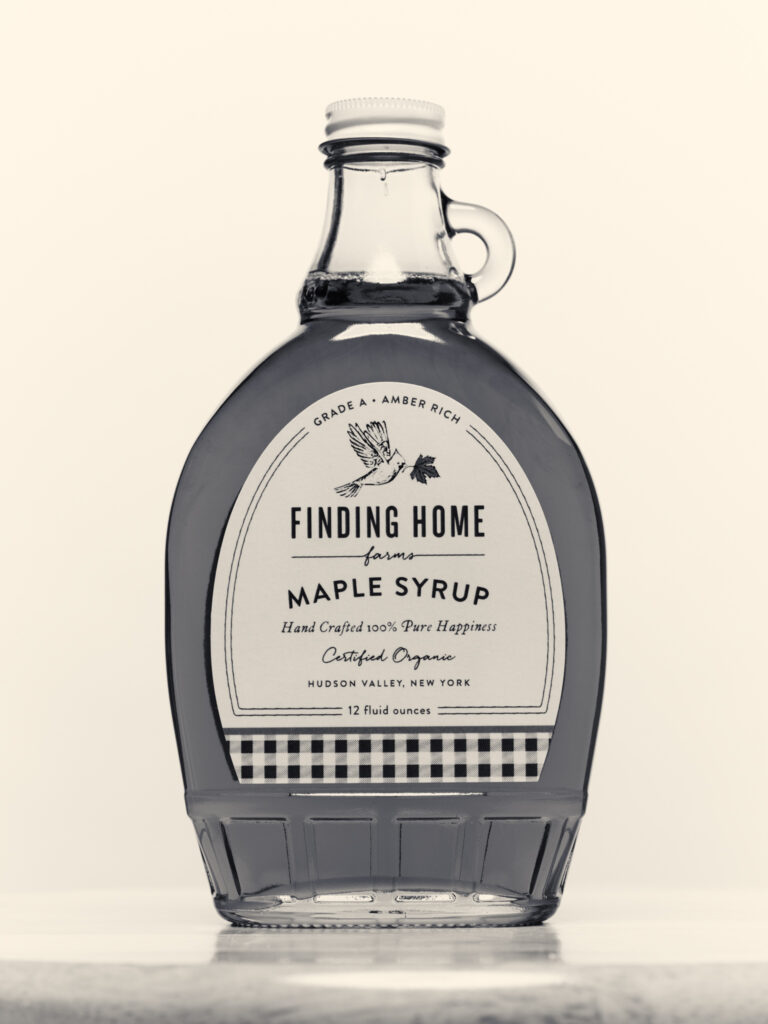
April is Earth Month and—to me—it’s a month in which we look at how we give back to what our planet provides. I actually never knew it was a whole month dedicated toward environmental awareness and giving love back to the Earth. I only thought it was one day. Who knew…
Alright, maple syrup.
That has become our in-house response to anything that we didn’t consider an option at first but now is something seen as a viable answer. We pulled that one from Cindy-Lou Who (yes, that one—but from the recent animated version of The Grinch). If ya haven’t seen it, it’s kind of contextual so I’ll just leave it alone for now.
But speaking of maple syrup, one thing that can also be done to broaden Earth month awareness is also taking care of our agriculture and farming and thus what we place in our bodies. Maple syrup is one of the few natural sugars we let our 3 little girls have. As it’s naturally found in the wild, it falls under the umbrella of responsible farming.
But it extends beyond maple syrup.
Regenerative agriculture and responsible farming are two trigger words these days that tend to be a catch-all phrase, but the actual practice doesn’t seem to be taking flight. As of the latter half of 2022, microbiologist and regenerative agriculture expert Dr. Kristine Nichols states that only 1.5% of the possible 900 million arable acres are truly regenerative. That is not a lot.
Political and financial arguments aside, the human, animal and environmental benefits of regenerative agriculture is just something that cannot be replaced or replicated. It’s a practice that not only creates better food, but better air quality and more beautiful and varied flowers, trees and plants.
So what can we all do to create a push for healthier and better farming methods?
One option is to support local farmers who practice these Earth-friendly and eco-system rich systems. It might cost a little more, but it often means your body needs less of it and it’s more bioavailble over time the more you consume it. It also often reflects the surrounding area you live is taken care of and things like drinking water and air quality are each healthier.
Grass finished—not only grass fed — beef is both more human friendly and environmentally beneficial. The excretion by grass finished animals re-populates the soil with good nutrients from the grass-only diet they consume and produces a densely nutritive soil. Additionally, grass traps atmospheric carbon dioxide and has a positive net effect on climate change.

Wild fish vs. farm raised fish don’t have as broad a difference as grass finished vs. grain finished beef, but there are some characteristic distinctions. Farm raised fish often are less expensive, are fed controlled (and often cheaper) diets including antibiotics and can have both less flavor and less overall nutrition. Because wild fish are caught in their natural habitat, those who consume them also consume their diet (which is usually much more nutritious). Although a little more expensive, wild fish have a higher profile of omega 3 fats (a host of benefits from brain health to fighting depression) and therefore are usually more desirable.
Organic vegetables are usually understood within the general public to be healthier options. They not only contain more flavonoids (antioxidants with anti-inflammatory and immune system perks) but since they also have less chemicals and heavy metals, they fall into the regenerative agriculture movement as the soil is richer in vitamins and minerals. A little more expensive (again), but well worth the extra money for the continuity of a safer and cleaner ecosystem.
Oils. This is a topic that has found its way into current vernacular in health discussions over the last 5-10 years and now seems to be practiced by more people. Vegetable oils contain higher levels of omega 6 fats (these tend to be more inflammatory to the body), tend to oxidize when heated and often contain GMO’s (genetically modified organisms) pulled from the corn and soybean—among other sources—they are culled from. Not a good option.
Conversely, olive oil, avocado oil, walnut oil, grass finished butter/ghee and even coconut oil are lower in inflammatory responses to the body and are sourced from natural resources on the Earth. All of these—if they are minimally processed—are gut friendly and can even combat weight gain to some extent.

Finally that brings me around to the topic of maple syrup—errr, sugar, sugar substitutes and varying degrees of sugar. Without diving into too much detail, exogenous sugar’s main objective is to provide energy for the body that can be used for fuel. But many people either vilify sugar, consume it in excess or have trouble quantifying some pluses different sweeteners and specific sugars have vs. the overarching theme of “all sugar is bad”.
There are a few different sugars out there, but I will only cover the main 3.
1). Fructose is found in fruits and honey primarily. It is the sweetest of sugars and can only be metabolized by the liver (thereby being more taxing on our immune system if ingested often enough).
2). Glucose is the most ubiquitous sugar found in plants and is the the basic building block of sugar in our bodies.
3). Sucrose is also naturally found in plants and is best known as table sugar milled from sugarcane.
Although coconut sugar contains the same number of calories and carbs per gram as regular table sugar/glucose, it does incorporate a little of zinc, iron, calcium and potassium in addition to polyphenols and phytonutrients.
Sugar alcohols, such as erythritol, maltitol and xylitol have about half the level of calories per gram as regular table sugar, don’t cause blood sugar spikes and have a lower dental risk. Conversely, sugar alcohols can cause gastrointestinal issues (yours truly gets them from too much ingestion) and laxative effects. These really have to be consumed in moderation.
Moreover, there are really great sugar substitutes in stevia and monk fruit. Each of these two products are found naturally in the wild and should be purchased as such and not with additives such as sugar alcohols to add to flavor and volume. Both have reduced amount of calories and have been shown to help control blood sugar levels. Although no long term study has been done to study any major health concerns, for the time being they are labeled safe.
For myself and my family, we use coconut sugar, monk fruit, table sugar and—yes—maple syrup for our sweeteners in our household. Honey can also be added in small amounts such as in homemade salad dressing and in bakery items.
So think about giving a little back to the planet you live on and have a mind toward a healthier world when it comes to the food you put on your table and the farming habits you choose to support. Whether it comes from the soil via vegetables or meats, from the water with fish and seafood to even maple syrup and other sugars, know that each purchase and decision you make impacts everyone else. – CT

